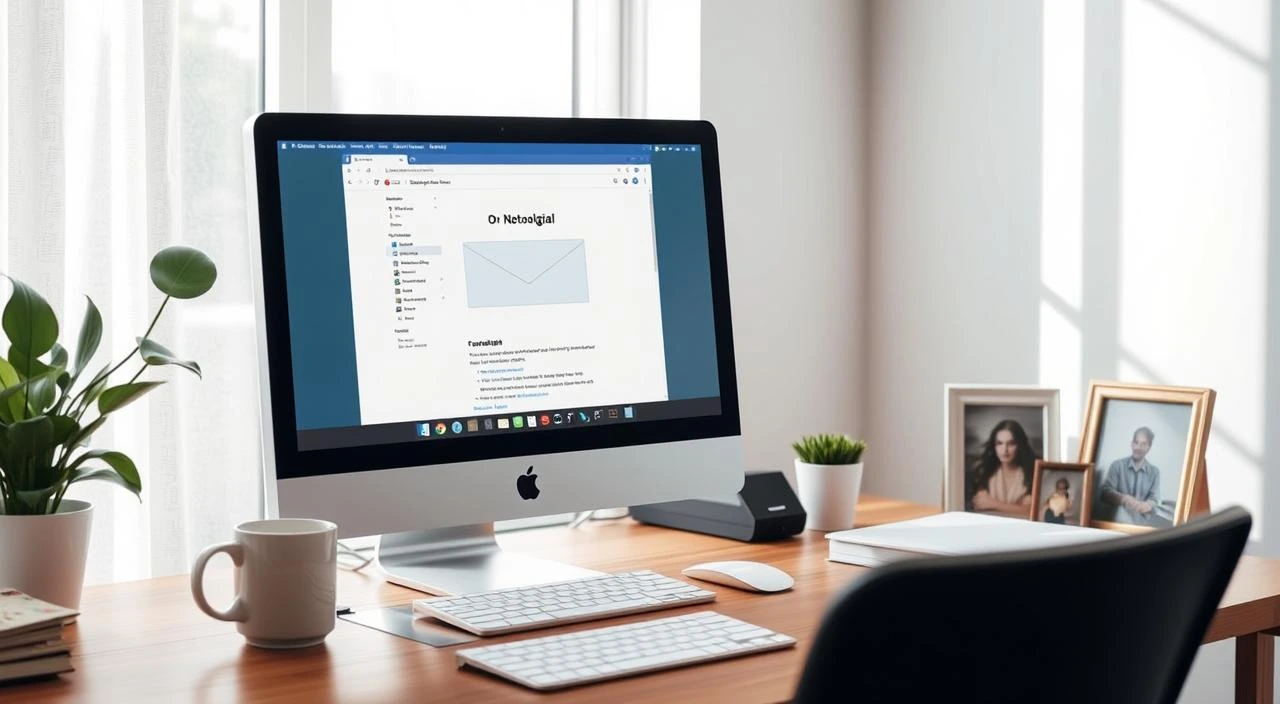About 7 in 10 employees leave their jobs because they feel unappreciated. A well-written farewell email can change this. It leaves a positive mark as you move on to new adventures. Saying goodbye to your coworkers, managers, and clients is a common practice.
It’s a chance to say thank you, share your contact info, and keep professional ties alive. These connections might open doors to new opportunities. Whether you’ve been there for years or just a few months, a heartfelt goodbye message can make a lasting impression.
Key Takeaways
- Craft a thoughtful goodbye email to leave on a positive note
- Express gratitude and maintain professional connections
- Tailor the message to different recipients, such as colleagues, managers, and clients
- Share contact information to stay in touch after your departure
- Avoid negativity and focus on the positive impact you’ve made
The Importance of Sending a Farewell Email
When you leave a company, sending a farewell email to your coworkers is a common practice. It’s not just a nice thing to do. It also helps keep relationships strong and grows your professional network.
Expressing Gratitude and Maintaining Professional Connections
A farewell email lets you thank your coworkers for their support and guidance. You can also share your new contact info, like a personal email or LinkedIn profile. This makes it easy to keep in touch with important people in your field.
Vicki Salemi, Career Expert at Monster.com, says, “A goodbye email wraps up your time at the company nicely.” It’s great for keeping in touch for future job references or recommendations.
“Sending a farewell email allows you to continue valuable relationships with coworkers and enrich your professional network as you start a new job.”
Writing a heartfelt farewell email can leave a good impression and solidify your legacy. It’s also a chance to thank managers and mentors who helped shape your career.
Creating a thoughtful farewell email can strengthen your professional ties. It helps you keep important connections as you move forward in your career.
Crafting a Thoughtful Farewell Email
Tips for Writing an Effective and Heartfelt Message
Saying goodbye to colleagues can be tough, but a good farewell email can leave a mark. Whether you’re leaving after 4 years or 18 and a half, these farewell email tips will help. You’ll write an effective goodbye message that’s both professional and emotionally resonant.
Before you send your farewell email, check with your manager. This ensures everyone knows you’re leaving. Send it a day or two before your last day. Make sure your subject line is catchy and sets the right mood.
In the email body, express real gratitude for the experiences and relationships you’re leaving. Include your contact information so people can stay in touch. Keep it concise and positive – aim for 50 words, not 400.
Don’t bring up negative stuff, even if things didn’t end well. This is your last impression – make it count. If you’re unsure about what to include, like your next job, ask your manager.
By using these farewell email tips, you’ll write a message that’s both heartfelt and professional. It will leave a positive mark on your colleagues and the company.
“A well-crafted farewell email can make a lasting impression and help maintain professional connections long after you’ve departed.”
Timing: When to Send Your Farewell Email
Timing is key when sending a farewell email. It’s best to send it three to four days before you leave. This lets you finish your work without being distracted by your departure.
For clients or vendors, tell them soon after you’ve given notice. This gives them time to adjust and ask questions, making the transition smoother.
- The ideal time to send a goodbye email to coworkers is three or four days before your departure.
- Including the date of your last working day in the email is important for informative purposes.
- In large corporations, it’s advisable to concentrate on sending farewell emails to supervisors and your department, while in small or medium-sized companies, it’s customary to send the email to all employees.
- Always send your farewell email a few days before your last day of work to allow for personal goodbyes and possibly organize a farewell gathering.
The timing of your farewell email is important. It should give enough notice and let you focus on your work. By sending it at the right time, you’ll leave a positive impression and ensure a smooth transition.
Choosing the Right Tone and Audience
The tone of your farewell email is very important. It can greatly affect how people see your message. Your email should be positive and thankful, no matter who it’s for. But, the exact tone will depend on your relationship and the company’s culture.
Tailoring Your Message for Different Recipients
An email to a close colleague might be more casual and personal. It could include shared memories and sincere thanks. But, an email to a manager at a big company should be more formal and to the point. It should express gratitude and wish them well for the future.
It’s important that your farewell email feels right for each person. Personalizing your messages makes your farewell more memorable and meaningful.
| Recipient | Recommended Tone |
|---|---|
| Close Colleagues | Informal, personal, and conversational |
| Managers or Superiors | Professional, respectful, and succinct |
| Clients or Business Partners | Formal, gracious, and appreciative |
| Subordinates or Direct Reports | Encouraging, supportive, and empowering |
Find the right mix of professionalism and personal touch. This way, your farewell email will make a good impression on everyone.
What to Include in Your Farewell Email
As you start a new chapter, writing a farewell email is a thoughtful way to say goodbye to your colleagues. Your message should be heartfelt, share personal stories, and include useful details for a smooth transition.
Expressing Gratitude and Sharing Memories
Start by thanking your colleagues for the chance to work together. Think of a special memory or a funny joke that sums up your time. This adds a personal touch to your email.
- CrowdStrike Stock: CRWD Shares and Market Analysis
- Turkish Airlines Business Class: Luxury in the Sky
Sharing Contact Details
Include your contact info, like email, phone number, and LinkedIn, so your colleagues can stay in touch. This helps keep professional connections alive even after you’re gone.
Highlighting Accomplishments
Highlight your main achievements and contributions. This shows your dedication and leaves a positive mark on your colleagues.
Offering Assistance
Offer to help with any tasks or questions during your remaining time. This shows you’re committed to a smooth transition and willing to support your team.
Keep your farewell email positive and professional. Avoid negative comments or confidential info. By doing so, you’ll leave a lasting impression and open doors for future collaborations.
Things to Avoid in a Farewell Email
When writing your farewell email, it’s important to avoid certain topics. Don’t share confidential or sensitive company or colleague information. Also, don’t make negative comments about your workplace, bosses, or coworkers, even if you had tough times.
This isn’t the time to air grievances or ask for references. Keep your message professional and positive. This way, you’ll leave on good terms and keep important connections strong.
By focusing on saying thank you and wishing everyone well, you can build your network. This sets you up for future opportunities.
What Not to Include in a Farewell Email
- Confidential information about the company or individuals
- Negative comments about the organization, management, or colleagues
- Requests for references or recommendations
A farewell email is your chance to leave a positive mark and keep professional ties. By showing gratitude and sending good wishes, you ensure a smooth transition. This also opens doors for future collaborations.
| Dos | Don’ts |
|---|---|
| Express gratitude for the opportunities and experiences | Share confidential or sensitive information |
| Offer well-wishes for the company’s and colleagues’ future success | Make negative remarks about the organization or individuals |
| Provide your personal contact information for staying in touch | Request references or recommendations |
By steering clear of these common mistakes and staying positive, you’ll create a farewell email that makes a good impression. It will also help you keep important professional connections.
farewell email to a long time business
Ending a job can be hard, even if you chose to leave for a better chance. It’s key to stay professional and positive in your farewell email to a long time business. This way, you end on a high note and keep the door open for future work together. A thoughtful goodbye email lets you say thanks, look back on your achievements, and make a positive impression.
Maintaining a Polished Tone
When you write your farewell email, don’t share any complaints. Instead, thank the company for the chances and the friends you’ve made. Talk about your wins and how you’ve grown, but be humble about it.
Emphasizing the Positive
Even if leaving is hard, focus on the good times. Think about what you’ve learned, the fun times you’ve had, and how the job has helped you grow. This leaves a good impression and keeps your professional relationship strong as you depart on good terms.
Offering Assistance and Connections
In your farewell email, say you’re ready to help with the transition or be a resource later. Share your contact info and tell your colleagues to keep in touch. This shows you care about the company’s future and want to stay connected.
Your farewell email to a long time business can be a meaningful goodbye. It’s a chance to thank, stay positive, and professional. This way, you close one chapter well and open the door to new chances, leaving a positive last impression.
Sample Farewell Email Templates
Writing a heartfelt farewell email is key when leaving a job or company. It’s important to thank everyone you’ve worked with. These farewell email templates can help you say thanks, keep in touch, and make a good impression.
For Peers and Coworkers
When saying goodbye to your coworkers, thank them for the time you’ve spent together. Share your future plans and give them your contact info. Be warm and sincere, remembering the good times and the team’s efforts.
For Managers
It’s important to thank your manager for their support and guidance. Talk about your achievements and thank them for the opportunities. Say you’re ready to help with the transition and want to stay in touch.
For Your Team
It’s nice to thank your team for their hard work and wish them well. Show your appreciation and share your contact info. This can help keep your connection strong.
For Clients
When saying goodbye to clients, be both professional and friendly. Tell them you’re leaving, offer to help with the transition, and wish them success. Give them your contact info for any future questions.
For Distant Colleagues
Even if you didn’t work closely with someone, a brief farewell email can make an impact. Thank them for their help and share your contact info. This way, they can stay in touch if they want.
A well-written goodbye email can help you keep professional relationships strong. It’s a good way to leave a positive mark, even as you start a new chapter. Use these sample farewell messages to make your departure smooth and respectful.
Conclusion
Sending a thoughtful farewell email to your long-time business partners and colleagues is key. It’s a way to say thank you and leave on a good note. This helps you keep a strong professional network and make a good impression.
By following the best practices and templates shared here, your goodbye email will be just right. It will make your recipients smile.
Writing a farewell email that follows farewell email best practices is important. It helps you keep professional relationships strong and leave on a high note. Whether you’re saying goodbye to the team, your boss, or clients, a heartfelt message is essential.
It shows you value your time together and appreciate the shared experiences. This can help keep connections alive and leave a positive mark.
As you start a new chapter, take time to write a farewell email that shows your gratitude and professionalism. Use the tips from this article to make sure your message is well-received. This way, you’ll leave a lasting, positive impression as you move on in your career.
FAQ
What is the purpose of sending a farewell email to a long-time business partner or colleague?
Sending a farewell email shows gratitude and keeps professional connections alive. It also leaves a positive impression as you leave the organization.
When is the best time to send a farewell email?
It’s best to send your farewell email a day or two before you leave. This way, you can focus on finishing your work without distractions.
How should the tone and content of the farewell email differ depending on the recipient?
Tailor the tone and content of your farewell email to the recipient. For close colleagues, it can be more informal and personal. For remote managers, it should be professional and to the point.
What key components should be included in a farewell email?
A good farewell email should have a few key parts. Express gratitude, share a good memory or compliment for close colleagues, include your personal contact info, and offer to help with any tasks.
What should be avoided in a farewell email?
Don’t share confidential info, make negative comments about the company or colleagues, or use it to settle scores. Keep the tone positive and professional.

My name is Jakir, I am a content writer, content creator, I give business, sports, finance, trending news and I have 10 years of experience in this and this is my blog goldennews24.com.










